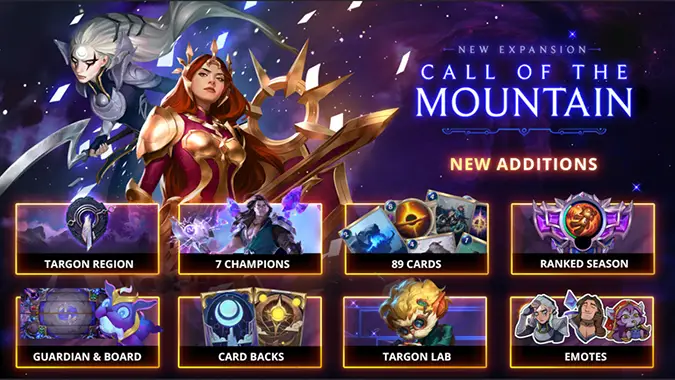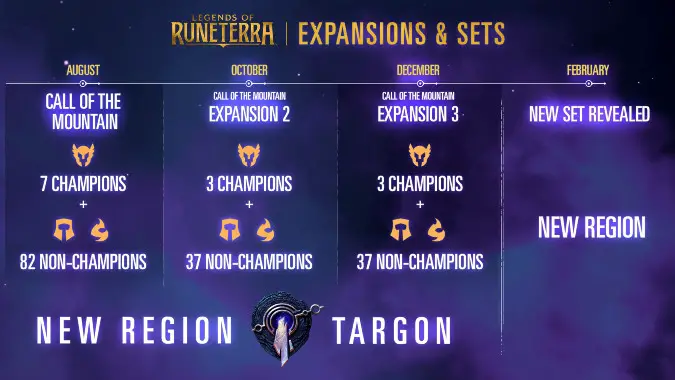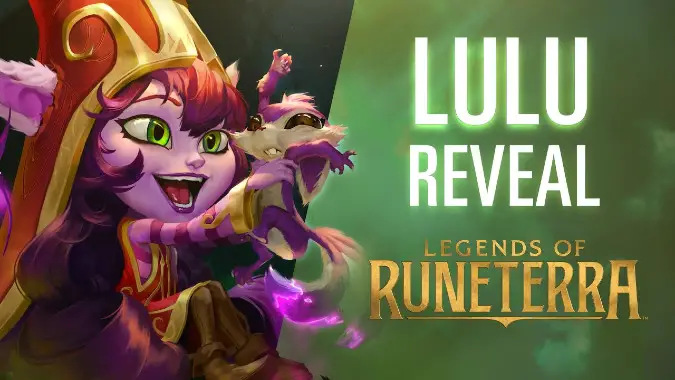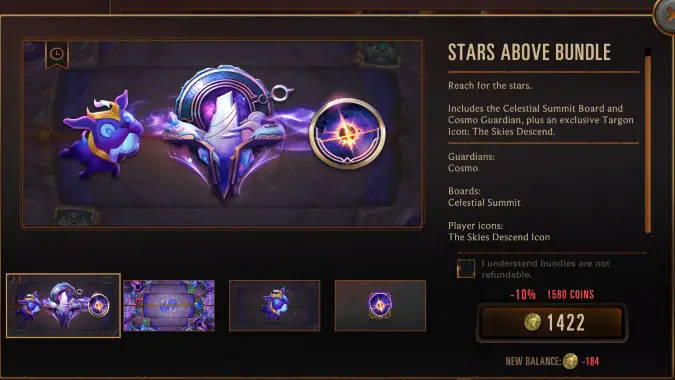What can Hearthstone learn from the new Legends of Runeterra expansion, Call of the Mountain?

To the delight of many a card game enthusiast, Legends of Runeterra has just released its first expansion — one of three to compose a set called Call of the Mountain. But what does that mean for us, Hearthstone players? Well, we can certainly look at how the game’s biggest competitor is handling things, and take note of what it does better. And as it turns out, there is a lot that it does better.
Runeterra’s expansion doesn’t rotate out older cards
First, and more importantly: Unlike what happens when Hearthstone releases a new set, nothing has been “rotated out.” That is, no cards have left “Standard” and been moved to “Wild” — Runeterra doesn’t even have those multiple game modes. Decks that worked once will still work, and might even get new tools to work better.
The truth is that doing things that way can be a double-edged sword: The game doesn’t renovate itself as much, and there is always the risk of it growing stale as time goes on. But there is an enormous advantage, which helps the game avoid what is, perhaps, the most common criticism people have about Hearthstone: The cards you earn and the decks you build won’t eventually rotate out, or be “wasted,” essentially forcing you to buy more packs if you want to keep playing.

New expansions bring new Regions, which are (kind of) like Classes in Hearthstone and new keywords
This is one of the key differences: In six years of existence, Hearthstone has only introduced one new class, the Demon Hunter. And even that only happened recently. Runeterra, on the other hand, will introduce a new Region with every new set of three expansions, and focus on that region for the whole set.
It’s important to remember that decks in Runeterra can be composed of up to two Regions, so every new Region is essentially “half a class” — which means that it can be combined with any of the previously existing Regions in the game, for several brand new options. As a set focuses on a new Region, it has to, by association, focus on how every old Region blends with it.
The brand-new Region that has been introduced with this set, Targon, is easily accessible to players. It has its own Road, which you can pick so that you will earn Targon cards as you accumulate XP by simply playing the game. A new version of Labs — Runeterra’s version of Brawls — with several pre-made Targon decks for players to try out for free, has also been released.
And for those players who want to spend real money in order to jump-start their collection, there is a brand-new Targon deck, ready to play, in the store. A player can simply purchase that deck and be ready to play Targon; no further grinding required.
The amount of new mechanics and keywords is very large. For this expansion, there’s Spellshield, Behold, Nightfall, Daybreak, Invoke, and Fury. That’s six brand new keywords — Hearthstone usually only introduces one or two, for fear of “overwhelming” players with too much information. But Legends of Runeterra has a very elegant solution to this problem, which I have already talked about in a previous article: You can simply click on a keyword, and an informative tooltip with a description of what that keyword does will be displayed. Players can easily learn what anything does as they encounter it in the game.

What happens if you enjoy playing one of the existing Regions?
For the older Regions, the new cards, including Champions, will both introduce new playstyles and reinforce existing ones. If you’ve been enjoying a certain deck, chances are very good that deck remains playable, and might even become stronger. A new expansion being released is going to be an exciting time for you, no matter what. You should never feel forced to learn a new playstyle, or to abandon an old favorite deck.
In addition to that, Targon wasn’t the only Region to receive a brand new Road — many of the older Region Roads have been revamped. You can simply choose your favorite old Region and earn their new cards as you play the game, without the need to spend any money if you don’t want to.
The addition of a Champion to an older Region means more than the addition of a new Legendary to an older class in Hearthstone. Each Champion comes with an entire package: several other cards that support it or have synergy with it, and often, its own gameplay idea. Every Champion you put in your deck means that a good part of your deck will have to be structured around it, to varying degrees.
So, even though every new expansion of Runeterra will “only” add one new Champion to some of the older Regions, the gameplay implications of that are likely to be more far-reaching than when a class in Hearthstone receives a “bad” legendary that ends up not being seriously played at all. That is not the case here: Every single card in Runeterra is designed to be “playable,” and when it isn’t, the developers have already shown that they are not afraid to constantly re-balance it until it is.

Cosmetics galore!
Another department where Hearthstone is sorely lacking, unlike its competitor, is that of purchasable cosmetics. All that Hearthstone offers to players are new Hero portraits and card backs — and those aren’t even necessarily tied to expansion releases.
Runeterra often adds entire themed bundles — most go to the store, but some of the cosmetics can also be earned for free, by playing the game during in-game events. Beyond card backs, there are also guardians — little pets that cheer you on — as well as boards, player icons, and emotes. We all know how compelling the collection of different cosmetics can be — Overwatch and World of Warcraft are already two big examples that the Hearthstone team could follow.
As I was looking at the new features for Call of the Mountain, I also tried to think about what Hearthstone does better than Runeterra with its expansion releases. And to be perfectly honest… I just blanked. Hearthstone is much more conservative with how much it shakes up the core of the game with each new release — instead, it opts to reset the meta and make players have to relearn things.
That approach has its value for those players who are already deeply invested into the game, but it is a huge turnoff for the more casual players. The Runeterra approach of not rotating things out, but simply introducing many — and I mean many — new things to the game with every expansion seems top be far more appealing to a bigger number of players.
Please consider supporting our Patreon!
Join the Discussion
Blizzard Watch is a safe space for all readers. By leaving comments on this site you agree to follow our commenting and community guidelines.




